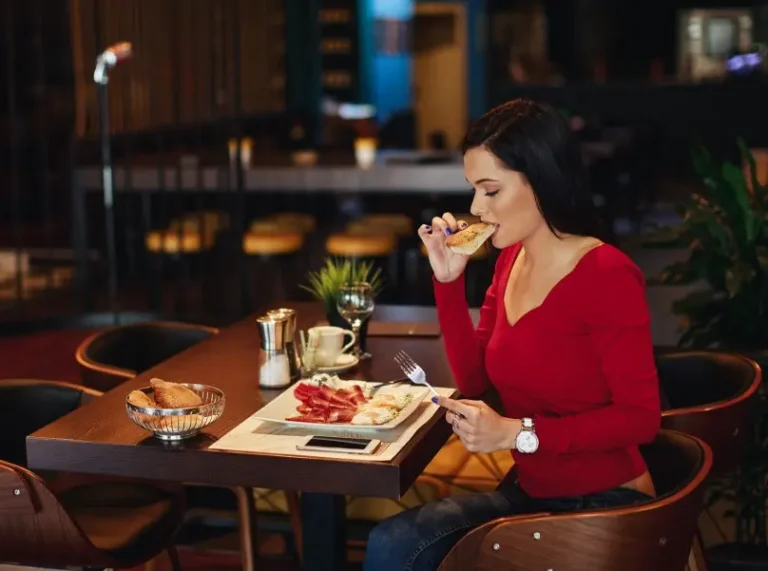I Followed Five Food Trucks for a Week – Here’s What Happened
When I told my friends I was planning to spend an entire week following food trucks around the city, they thought I’d lost my mind. “You’re going to eat truck food for seven straight days?” they asked, as if I’d announced plans to live on Mars. But this wasn’t just about the food – though trust me, there was plenty of incredible eating involved. This was about understanding the hidden ecosystem that keeps our streets fed, one mobile kitchen at a time.
Monday: The Military Operation of Abuela’s Kitchen
My week began at 5:30 AM on a Monday, when I met Carlos outside his commissary kitchen. His “Abuela’s Kitchen” truck specializes in authentic Mexican street food, and watching him prep for the day was like witnessing a military operation. Every ingredient had its place, every tool had its purpose. “People think we just show up and cook,” Carlos told me as he loaded his truck with precisely portioned containers of carnitas. “They don’t see the three hours of prep that happens before we even start the engine.”
The first stop was the downtown financial district, where Carlos had claimed a prime spot by 7 AM. Within minutes, a line of suited professionals began forming, and I watched as Carlos transformed from prep cook to performance artist. Every burrito was wrapped with theatrical flair, every order called out with genuine warmth. “Maria! Your usual breakfast burrito, extra hot sauce!” The regulars weren’t just customers – they were family.
Tuesday: Data-Driven Korean Fusion
Tuesday brought me to Jenny’s “Seoul Kitchen” truck, which serves Korean-fusion dishes that have gained a cult following among food trucks in Melbourne enthusiasts who’ve relocated here. Jenny’s operation was completely different from Carlos’s. Where he was all warmth and familiarity, she was precision and innovation. Her kimchi tacos weren’t just fusion food – they were engineering marvels, each component carefully balanced to create something entirely new.
What struck me most about Jenny was her data-driven approach. She tracked everything: which items sold best on which days, how weather affected sales, even which social media posts drove the most foot traffic. “People think food trucks are this romantic, free-spirited thing,” she explained while updating her inventory spreadsheet. “But successful trucks are businesses first, dreams second.”
Wednesday: The BBQ Spectacle
Wednesday was chaos day with “Big Mike’s BBQ.” Mike’s truck is famous for its massive portions and even bigger personality, but what I discovered was that behind the jovial exterior was a logistics mastermind. Mike had to coordinate with three different commissary kitchens, manage a staff of four, and somehow make it all look effortless while serving customers. His secret? Military-style organization combined with the flexibility of a jazz musician.
The lunch rush at Mike’s truck was unlike anything I’d witnessed. Orders flew in faster than seemed humanly possible to fulfill, yet somehow every plate emerged perfect. Mike orchestrated his team like a conductor, calling out modifications and special requests while maintaining a running commentary that kept the waiting crowd entertained. “This isn’t just about food,” he told me during a brief lull. “We’re selling an experience. People could get BBQ anywhere, but they come here for the whole show.”
Thursday: Learning from Struggle
Thursday introduced me to the newest truck in my cohort: “Garden Fresh,” run by recent culinary school graduate Amanda. Her all-vegetarian menu was ambitious, featuring dishes that challenged every preconception about what food truck fare could be. But Amanda’s inexperience showed in ways that the other operators had learned to navigate years ago.
Where Carlos, Jenny, and Mike had developed systems for everything, Amanda was improvising constantly. A late delivery of organic vegetables threw off her entire morning prep. A complex order during the lunch rush backed up her line for twenty minutes. Watching her struggle was both frustrating and inspiring – she was clearly talented, but talent alone wasn’t enough in the unforgiving world of mobile food service.
Friday: The Perfect Partnership
Friday brought the week full circle with “Tokyo Street,” operated by husband-and-wife team Hiroshi and Keiko. Their truck serves authentic Japanese street food, and their operation combined the best elements I’d observed all week. They had Carlos’s warmth, Jenny’s precision, Mike’s efficiency, and something uniquely their own: an almost telepathic communication that allowed them to work in perfect harmony.
Watching Hiroshi and Keiko work together was like watching a dance. They never spoke during service, yet they anticipated each other’s needs perfectly. When Keiko needed more takoyaki batter, Hiroshi was already preparing it. When Hiroshi ran low on sauce, Keiko appeared with a fresh container. Twenty-three years of marriage and five years of food truck operation had created something beautiful.
What I Learned About Community
The week taught me that food trucks aren’t just restaurants on wheels – they’re small businesses facing unique challenges that brick-and-mortar establishments never encounter. They deal with weather, traffic, changing regulations, mechanical breakdowns, and the constant need to rebuild their customer base in new locations. Yet despite these challenges, each operator I followed displayed a passion for their craft that was infectious.
More importantly, I learned that food trucks serve as community anchors in ways I’d never considered. They’re not just feeding people; they’re creating gathering spaces, fostering relationships, and bringing diverse culinary traditions to neighborhoods that might otherwise never experience them. Carlos’s regulars didn’t just buy breakfast – they caught up on each other’s lives. Jenny’s customers often stayed to chat about her latest menu innovations. Mike’s truck was a social hub where strangers became friends over shared plates of brisket.
By the end of the week, I understood why these five operators had chosen this demanding lifestyle. It wasn’t just about food, or even about business success. It was about the unique opportunity to connect with their community in a way that felt both intimate and impactful. Every day brought new challenges, but also new opportunities to make someone’s day a little better with great food and genuine human connection.
The food truck industry might be growing and evolving, but at its heart, it remains what it’s always been: hardworking people serving their communities, one meal at a time.
Read more: How Inclusive Workplaces Drive Organizational Success » Dunkin Donuts
The Hidden Costs of a Bad Tech Hire
Beyond Black and Grey: The Rise of Unexpected Colours in Men’s Coats


